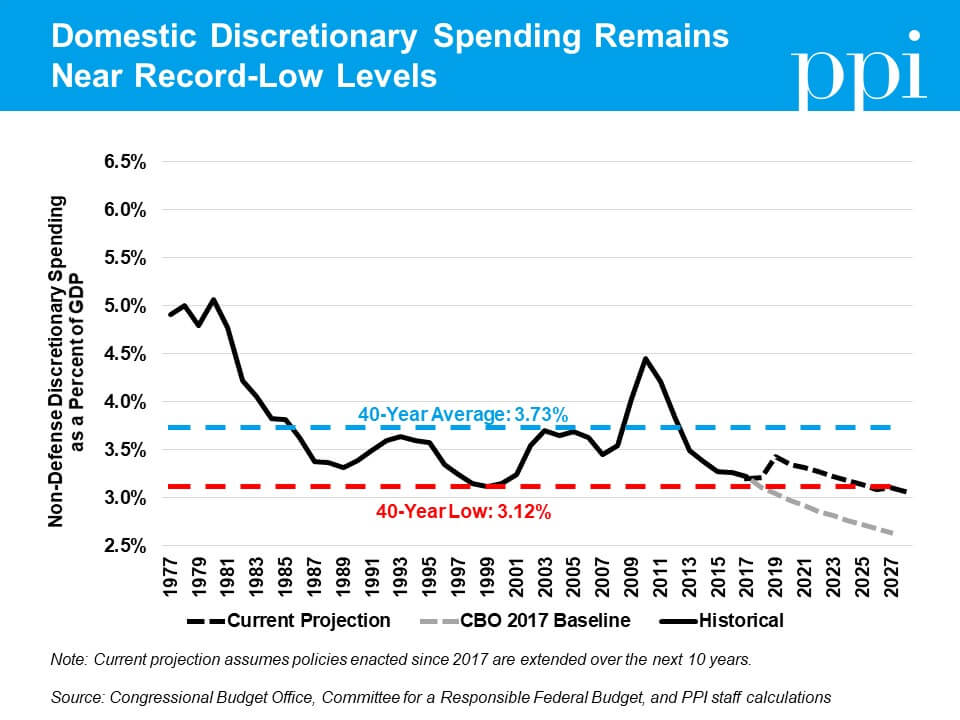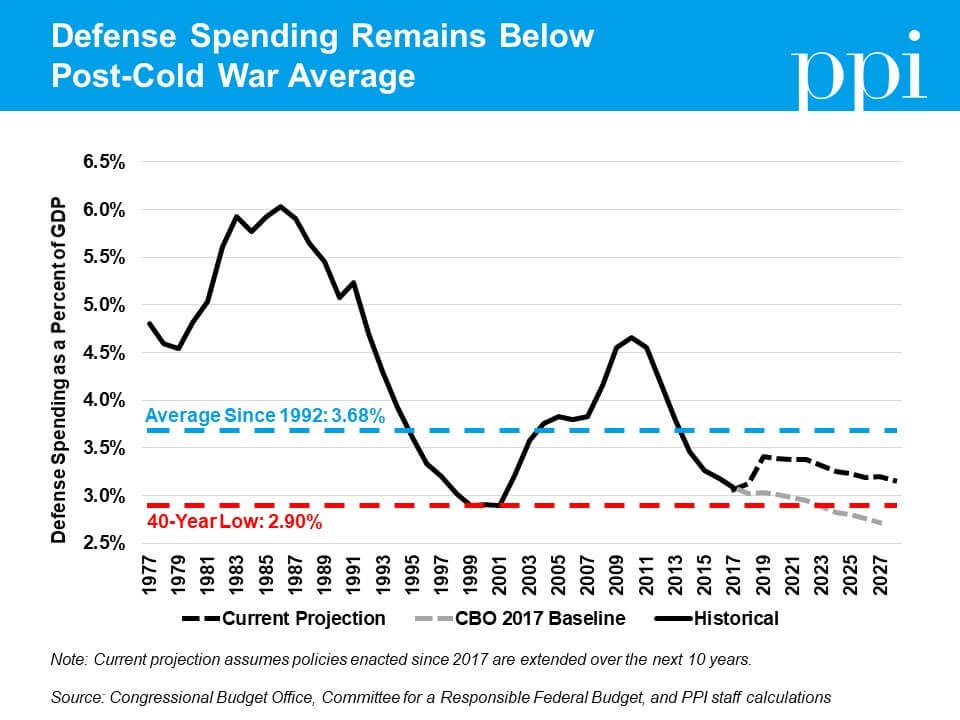Although February’s bipartisan budget deal significantly increased discretionary spending, the portion of the federal budget appropriated annually by Congress remains near record-low levels. Both defense and non-defense (domestic) discretionary spending are falling relative to the size of the economy – a trend that has serious long-term implications for our nation’s ability to make critical public investments that strengthen the foundation of our economy.
Domestic discretionary spending is the category of federal spending that encompasses virtually all non-defense, non-entitlement programs. These programs include critical public investments such as infrastructure and scientific research that provide long-term benefits to our society. It is also the part of the budget that Congress has the flexibility to use for addressing unexpected crises such as natural disasters and economic downturns. Reducing the resources available for domestic discretionary spending thus risks jeopardizing many core government functions and the future health of our economy.
Unfortunately, that’s exactly what policymakers have been doing in recent years. The Budget Control Act of 2011 capped both categories of discretionary spending as part of a broader effort to reduce future deficits. When Congress failed to reach a bipartisan agreement on taxes and other categories of federal spending, the BCA automatically triggered an even deeper, across-the-board cut to discretionary spending known as sequestration. While the sequester has been lifted several times since it first took effect, discretionary spending consistently remained far below the original BCA caps.
That trend ended with the Bipartisan Budget Act of 2018. This budget deal not only lifted discretionary spending above sequester levels – it also went above and beyond the original BCA caps for two years. Nevertheless, projected domestic discretionary spending for Fiscal Year 2019 is significantly below the historical average as a percentage of gross domestic product. Moreover, even if policymakers extended these policy changes beyond the two years covered by the BBA, we project that domestic discretionary spending could fall to just 3 percent of GDP within the next decade – the lowest level in modern history.

 The story is similar for defense spending. Thanks to the pressure put on by the sequester, defense discretionary spending fell to just under 3.1 percent of GDP in FY2017. Under the BBA, defense spending would increase to 3.4 percent of GDP in FY2019 before falling again. Unlike domestic discretionary spending, however, defense would remain above the all-time low it reached before the 2001 terrorist attacks throughout the next decade.
The story is similar for defense spending. Thanks to the pressure put on by the sequester, defense discretionary spending fell to just under 3.1 percent of GDP in FY2017. Under the BBA, defense spending would increase to 3.4 percent of GDP in FY2019 before falling again. Unlike domestic discretionary spending, however, defense would remain above the all-time low it reached before the 2001 terrorist attacks throughout the next decade.
None of this is to say that policymakers should abandon any semblance of fiscal discipline when it comes to discretionary spending. The budget deal set domestic discretionary spending levels above those requested in President Obama’s final budget while also setting defense spending above the levels requested by President Trump. This fact suggests that the immediate spending increase was more than either party really needed to fund its priorities. Sharp spending increases without a clear purpose are more likely to lead to waste as government officials lose the incentive to make tradeoffs and efficiently target taxpayer resources.
Moreover, the budget challenges that led to the original imposition of the Budget Control Act remain serious. PPI criticized the BBA because we believe that any spending increase above the original BCA caps – which were meant to be a down payment on much-needed fiscal discipline – should be offset so as not to further exacerbate the nation’s already ballooning budget deficit. Thanks to both it and other recently enacted legislation, the federal government is now running an annual budget deficit that may never fall below $1 trillion again.
But when policymakers are ultimately forced to confront the nation’s long-term fiscal challenges, they should focus their efforts on the tax code and non-discretionary programs that are growing on auto-pilot faster than the economy. Discretionary spending isn’t the main driver our budget deficits, and most of the savings achieved by cutting internal waste should be redirected towards more beneficial public investments. A great nation invests in its future and cutting those investments too deeply will only hurt us in the long run.